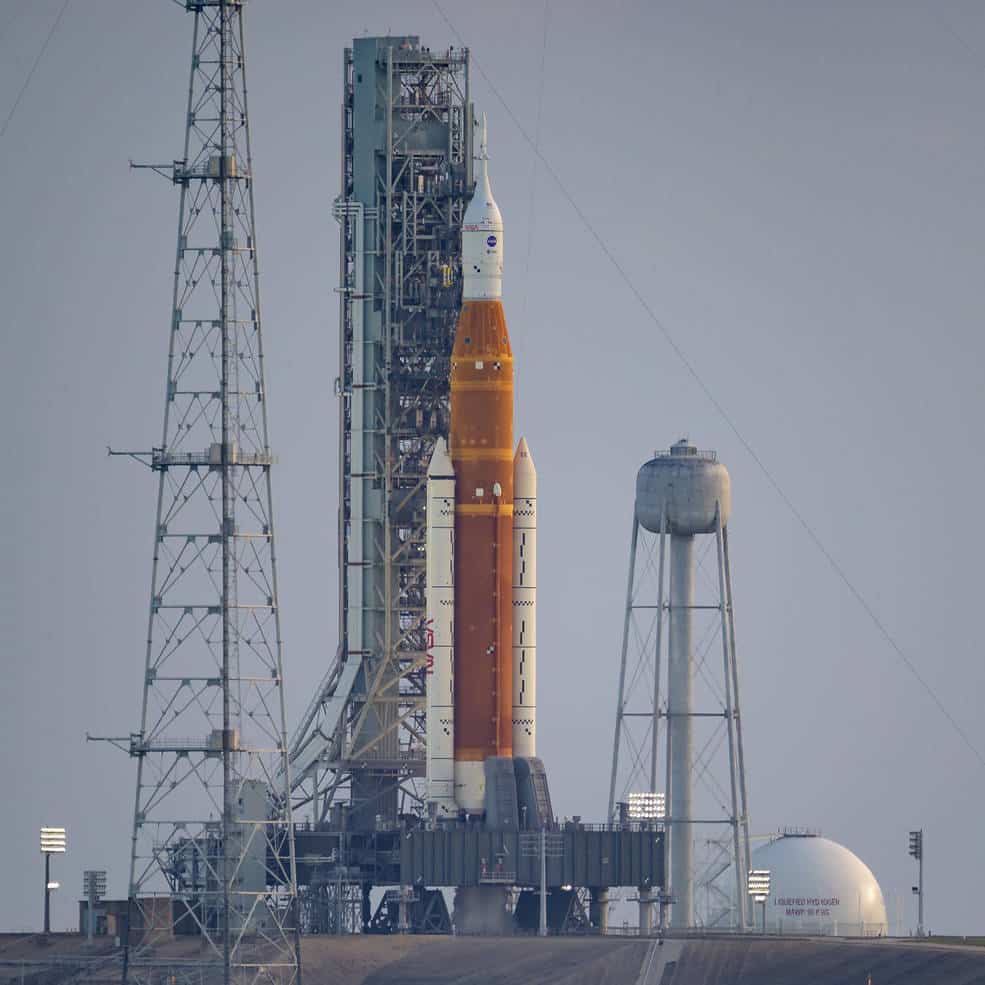Aerospace
why NASA cancelled its Artemis 1 moon mission launch at the last moment

The NASA Artemis 1 moon mission was supposed to launch on August 29 from the Kennedy Space Center in Cape Canaveral, Florida, however, NASA had to cancel the lunar test flight. This occurred as a result of a leak in one of the unmanned spacecraft’s four RS-25 engines. The mission was to settle on the moon in six weeks.
The night before the launch, the Artemis 1 lunar mission was delayed. Overnight operations to fill the rocket with more than three million liters of extremely cold liquid hydrogen and oxygen were temporarily paused due to a high risk of lightning, but they resumed an hour later. Another delay was caused at about 3:30 AM when a potential leak was seen as the main stage was being fueled with hydrogen.
A problem with the rocket’s main engine, RS-25, was found forty minutes before liftoff. When the launch team began putting liquid oxygen and hydrogen propellants in the rocket’s core fuel tanks, NASA claims they first became aware of the engine bleed.
Cryogenic fuel had to be “conditioned” into the four RS-25 engines utilized in the rocket’s core stage in order to get them ready for takeoff. However, one of these engines was unable to keep the appropriate cooling temperature as NASA had anticipated.
Nelson said on Saturday that despite the most recent Artemis 1 delays, NASA was still planning to launch Artemis 2 in 2024 and Artemis 3 in 2025.
If NASA relies on this rocket and capsule, which have a high price tag, critics claim the Artemis program will be too expensive to be financially viable. Each of the initial flights, according to NASA’s inspector general, will cost more than $4 billion, not including the enormous sums spent on research and development.

Aerospace
Boeing Transfers Rocket Stage to NASA, Paving Way for Human Moon Mission

Boeing has achieved a significant milestone by providing NASA with the second core stage of the Space Launch System (SLS) rocket.
This crucial component, crafted at NASA’s Michoud Assembly Facility (MAF), is set to propel the Artemis II crew into lunar orbit, marking humanity’s return to deep space after a 50-year hiatus.
The monumental Boeing-built rocket stage, the largest element of the Artemis II mission, will embark on a journey aboard the Pegasus barge, traveling 900 miles to NASA’s Kennedy Space Center.
Comparison of two legendary aircraft B777x vs B747 aircraft:Click here
Upon arrival, it will be meticulously integrated with other essential Artemis II components, including the upper stage, solid rocket boosters, and NASA’s Orion spacecraft within the iconic Vehicle Assembly Building. This intricate integration process is a vital step toward the eagerly anticipated Artemis II launch, slated for 2025.
“Boeing-built products helped land humankind on the moon in 1969, and we’re proud to continue that legacy through the Artemis generation,” remarked Dave Dutcher, vice president and program manager for Boeing’s SLS program. “Together, with NASA and our industry partners and suppliers, we are building the world’s most capable rocket and paving the way to deep space through America’s rocket factory in New Orleans.”
NASA, Lockheed Martin Reveal X-59 Quiet Supersonic Aircraft:Click here
The delivery of Core Stage 2 marks a significant achievement in the evolution of the SLS rocket. Towering over 200 feet and powered by four RS-25 engines, this core stage, coupled with two solid-fueled booster rockets, will generate a staggering 8.8 million pounds of thrust. This immense power is crucial to launching Artemis II and future missions into the vast expanse of space.
The SLS rocket stands unparalleled in its capability to transport both crew and substantial cargo to the moon and beyond in a single launch. Its extraordinary capacity will facilitate the delivery of human-rated spacecraft, habitats, and scientific missions to destinations including the moon and Mars, ushering in a new era of space exploration.
-

 Travel1 week ago
Travel1 week agoAir India to Expand US Operations with Three New Routes After a Decade
-

 Travel2 weeks ago
Travel2 weeks agoWhy We Should Avoid These Stamps in a Passport
-

 Airlines1 month ago
Airlines1 month agoInvestigations Reveal Fake Chinese Titanium in Boeing and Airbus Jets
-

 Tech4 weeks ago
Tech4 weeks agoChina’s CATL Plans 1,800-Mile Electric Plane Launch by 2027
-

 Airport3 days ago
Airport3 days agoTop 10 Largest Airports in the World by Size
-

 Aerospace4 weeks ago
Aerospace4 weeks agoChina’s Fighter Jets Turn Wings into Autonomous Drones
-

 Airlines4 days ago
Airlines4 days agoAir India Rolls Out A350s for Delhi-New York JFK and Newark Routes
-

 Defence3 weeks ago
Defence3 weeks agoBoeing Enhances Chinook with New Engines and Block II Upgrades at $96 Million







